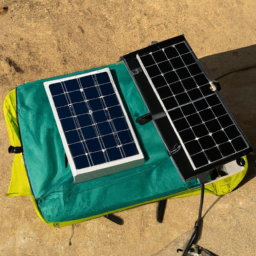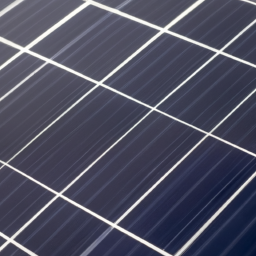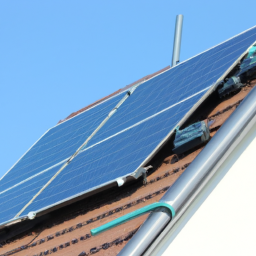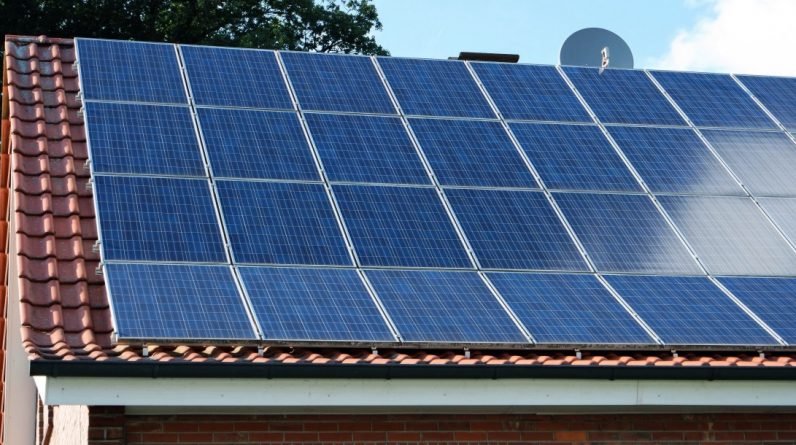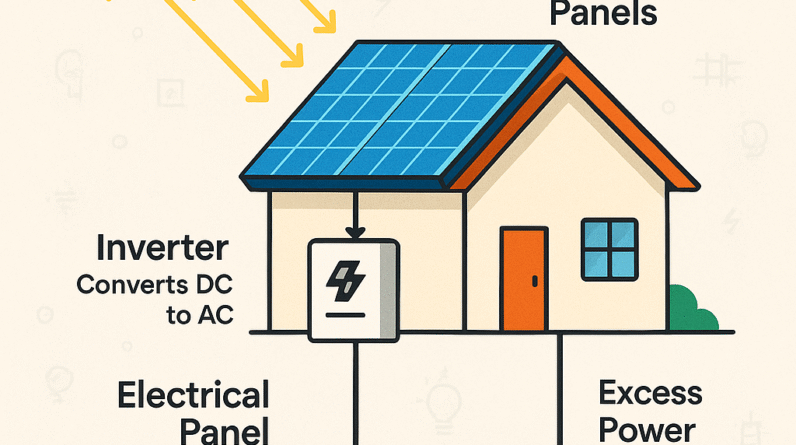
How Many Solar Panels Do I Need For A 400 Sq Ft Home?
How Many Solar Panels Do I Need For A 400 Sq Ft Home? Living in a 400 sq ft home can provide a cozy and sustainable lifestyle, but when it comes to powering your abode with solar energy, you may find yourself wondering, “How many solar panels do I actually need?” Solar panels are an excellent way to harness the free and renewable energy of the sun, but determining the ideal number of panels for your specific home can be a challenge. Thankfully, with a few key considerations and some expert advice, you can easily calculate the perfect number of solar panels to keep your 400 sq ft haven powered and planet-friendly.
Determining Electricity Needs
Calculating Average Energy Consumption
To determine the number of solar panels you need for your 400 sq ft home, it is essential to first calculate your average energy consumption. Start by reviewing your monthly electricity bills to obtain an idea of your household’s energy usage patterns. Look for the total kilowatt-hours (kWh) consumed each month and calculate the average over the course of a year. This information will serve as a baseline for estimating your solar panel needs.
Analyzing Monthly Electricity Bills
By analyzing your monthly electricity bills, you can identify any trends or patterns in your energy usage. Look for months with higher energy consumption, such as during extreme weather conditions, when you have guests, or if you frequently use energy-intensive appliances. Understanding your peak usage months will help determine the size and capacity of the solar panel system required to meet your specific needs.
Identifying Peak Usage Hours
In addition to analyzing your monthly electricity bills, it is equally important to identify your household’s peak usage hours. This involves determining the times of day when you typically consume the most electricity. Pay attention to activities that use a significant amount of energy, such as running the dishwasher, doing laundry, or using air conditioning. By knowing your peak usage hours, you can optimize your solar panel system and ensure it generates enough energy during these high-demand periods.
Solar Panel Efficiency
Understanding Solar Panel Efficiency Ratings
Solar panel efficiency refers to how effectively a solar panel converts sunlight into electricity. It is indicated by a percentage, and higher efficiency ratings typically mean that the panel can generate more electricity with the same amount of sunlight. When selecting solar panels for your 400 sq ft home, it is crucial to consider the efficiency ratings of different options to maximize the electricity output and overall effectiveness of your system.
Considering Different Types of Solar Panels
There are various types of solar panels available, such as monocrystalline, polycrystalline, and thin-film panels. Each type has its own characteristics and efficiency levels. Monocrystalline panels, for example, are known for their high efficiency and sleek appearance but tend to be more expensive. Polycrystalline panels are slightly less efficient but offer a more affordable option. Thin-film panels, while less efficient, can be flexible and suitable for certain installation scenarios. Consider the pros and cons of each type before making a decision.
Evaluating the Location and Angle of Installation
The location and angle of installation play a significant role in the performance and efficiency of your solar panels. South-facing roofs generally receive the most sunlight throughout the day, making them ideal for maximum solar generation. Additionally, considering the tilt or angle at which the panels are installed is crucial. It is recommended to tilt the panels at an angle equal to your latitude to optimize exposure to the sun. However, if your roof has limited space or is not south-facing, other options and adjustments can still be explored to achieve optimal efficiency.
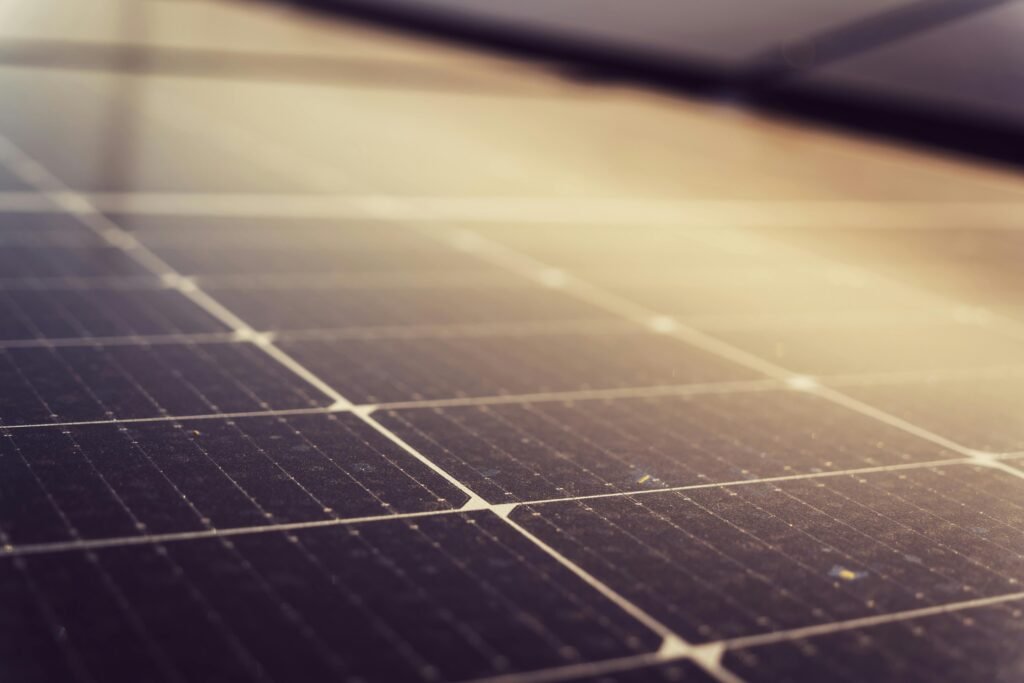
This image is property of images.pexels.com.
Calculating Solar Panel Output
Determining Average Daily Sunlight Hours
The amount of sunlight your location receives is a crucial factor when calculating solar panel output. You can use online resources or consult local weather data to determine the average number of daily sunlight hours in your area. Keep in mind that this value may vary seasonally, with longer daylight hours during the summer months and shorter hours during winter. By understanding the average daily sunlight hours, you can estimate how much energy your solar panels will generate on a daily basis.
Considering Solar Panel Losses
While solar panels are highly effective at converting sunlight into electricity, there are certain losses to consider. These losses can occur due to factors such as wiring resistance, soiling, shading, and temperature. It is important to account for these losses when calculating the solar panel output for your 400 sq ft home. Consulting with a solar panel expert can help provide accurate estimates of these losses based on your specific installation scenario.
Accounting for Conversion Efficiency
Conversion efficiency refers to the ability of the solar panels to convert sunlight into usable electricity. It is important to select solar panels with high conversion efficiency to maximize the energy output. With advancements in technology, many panels now have efficiency ratings above 20%. Considering the conversion efficiency of the panels you choose will help accurately calculate their output and ensure your energy needs are met.
Assessing Solar Panel Capacity
Calculating Total Daily Energy Consumption
To accurately assess the solar panel capacity required for your 400 sq ft home, calculate your total daily energy consumption. This involves determining the average daily kWh usage based on your previous electricity bills. Consider the varied energy needs throughout different seasons and any additional energy consumption patterns you may have identified. By understanding your total daily energy consumption, you can size your solar panel system accordingly.
Factoring in Seasonal Variations
Take into account any seasonal variations in energy consumption when assessing your solar panel capacity. For example, if you use more energy during the winter due to heating requirements, your solar panel system should be designed to accommodate these increased demands. Considering the energy needs throughout the year will ensure that your panels generate enough electricity, regardless of the season.
Considering Backup Battery Systems
Incorporating a backup battery system into your solar panel setup is worth considering, particularly for situations when your solar panels may not generate enough electricity or during power outages. Backup battery systems allow you to store excess energy produced by your panels during peak hours and use it when needed. This ensures a consistent power supply, even when your electricity demands exceed your solar panel output.
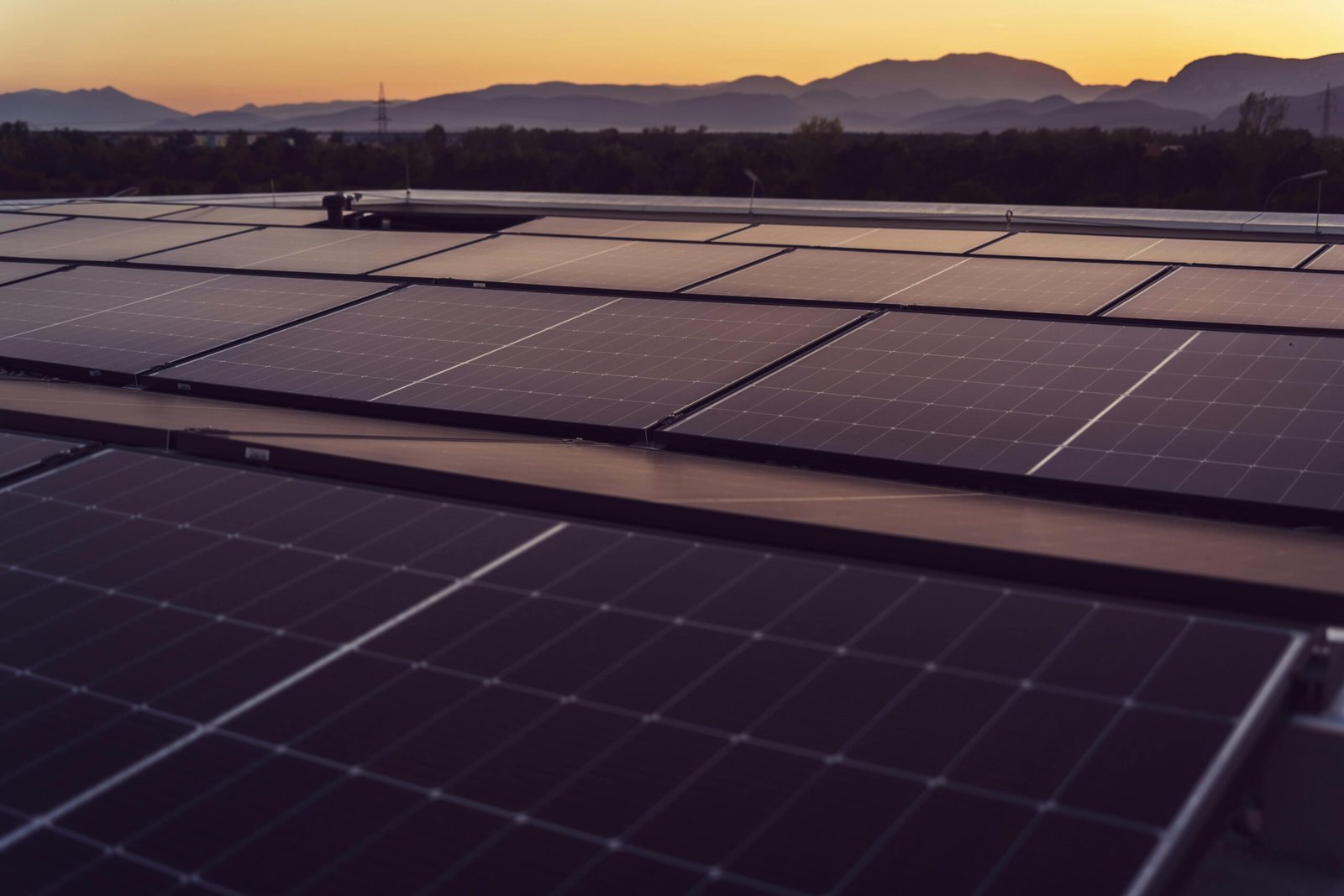
This image is property of images.pexels.com.
Solar Panel Wattage and Size
Understanding Panel Wattage and Power Output
Panel wattage refers to the maximum power output a solar panel can produce under standard test conditions. Higher wattage panels generally produce more electricity. When selecting solar panels for your 400 sq ft home, consider the wattage to ensure it aligns with your energy consumption requirements. Higher wattage panels are beneficial if you have limited roof space available or want to maximize the power output from a smaller installation.
Selecting Appropriate Panel Sizes
The size of the solar panels you choose depends on the available roof space and your energy needs. Consider the dimensions and physical footprint of the panels to ensure they can be properly installed on your roof. Additionally, if you have space limitations, selecting smaller panels with higher wattage can help optimize the power output within the given area. Balancing panel size and wattage is crucial to achieving the desired electricity generation for your 400 sq ft home.
Accounting for Roof Space Limitations
Take into account any roof space limitations you may have when determining the number of solar panels needed. If your 400 sq ft home has limited roof area available for solar panel installation, it may be necessary to select higher wattage panels to generate enough electricity with the available space. Alternatively, you could explore other options such as ground-mounted systems or panel placement on other structures like a garage or pergola, if feasible.
Sun Exposure and Location
Assessing Available Sun Exposure
Evaluating the amount of sun exposure your property receives is crucial in determining solar panel suitability. Assess your roof’s orientation and consider any obstructions like tall trees or nearby buildings that may cast shadows on your panels. While some shading is inevitable, it is important to ensure that your panels receive sufficient sunlight throughout the day for optimal energy generation. If your property has limited sun exposure or shading issues, consult a solar panel expert who can suggest solutions like panel angling or trimming nearby trees.
Evaluating Potential Shading Issues
Shading can significantly impact the performance of your solar panels by reducing the amount of sunlight they receive. Even partial shading can have a noticeable effect on energy generation. Thoroughly evaluate your property to identify any potential shading issues, both from natural elements and man-made structures. If shading is unavoidable, consider strategies like micro-inverters or power optimizers that can mitigate the impact of shading on individual panels.
Considering Local Climate Conditions
The local climate conditions play a crucial role in solar panel performance and durability. Evaluate the weather patterns and average sunlight levels in your area. Locations that receive more sunlight throughout the year generally result in higher solar panel output. Additionally, consider the climate’s impact on panel lifespan and performance. For instance, if your area experiences heavy snowfall, you may need to take extra precautions to ensure your panels can withstand the weight and are properly angled to shed snow.

This image is property of images.pexels.com.
Consulting a Solar Panel Expert
Seeking Professional Solar Panel Advice
Seeking advice from a professional solar panel expert can be immensely beneficial when determining the optimal solar panel setup for your 400 sq ft home. These experts have the knowledge and experience to accurately assess your energy needs, evaluate your property’s specifications, and recommend the most suitable solar panel system based on your specific requirements. Consulting an expert ensures that you make informed decisions and avoid costly mistakes in the solar installation process.
Getting a Home Energy Audit
A home energy audit can provide valuable insights into your overall energy consumption and identify areas where energy efficiency improvements can be made. Engaging a professional to conduct an energy audit can help identify any underlying issues or inefficiencies that may affect the performance of your solar panel system. By optimizing your home’s energy efficiency, you can potentially reduce your overall energy consumption and further maximize the benefits of your solar panel installation.
Considering Site-Specific Factors
Every property is unique, and there may be site-specific factors that need to be considered when determining the solar panel system for your 400 sq ft home. These factors can include building regulations, permits, local utility requirements, and even aesthetic considerations. By taking into account these site-specific factors, you can ensure that your solar panel installation meets all necessary regulations and seamlessly integrates with your property.
Considerations for Off-Grid Systems
Assessing the Need for Off-Grid Power
If your goal is to achieve complete energy independence or if the location of your 400 sq ft home makes connecting to the electrical grid challenging or costly, an off-grid solar panel system may be a viable option. Assess your energy needs and lifestyle to determine if an off-grid system is necessary. Off-grid systems require additional considerations, such as storage batteries, backup power sources, and careful management of energy consumption to ensure a reliable and uninterrupted power supply.
Calculating Battery Storage Requirements
When considering an off-grid solar panel system, calculating the battery storage requirements is crucial. This calculation involves estimating the energy consumption during non-sunlight hours and determining the capacity and number of batteries needed to store and supply that energy. A solar panel expert can assist in accurately assessing your battery storage needs based on factors such as daily energy consumption, desired backup power duration, and the efficiency of the battery technology chosen.
Accounting for Standby Power Usage
In off-grid systems, it is important to account for standby power usage, which refers to the continuous energy consumption of appliances and electronics that are always connected or in standby mode. Standby power can be a significant drain on battery reserves, especially during extended periods without sunlight. By identifying and minimizing standby power usage, you can optimize the performance of your off-grid solar panel system and avoid potential energy shortages.
Estimating Cost and Return on Investment
Understanding Solar Panel Costs
When considering solar panel installation for your 400 sq ft home, it is important to understand the costs involved. Factors that contribute to the total cost include the number and type of panels, installation fees, permits, and any additional equipment required such as inverters or battery storage systems. Obtaining quotes from multiple solar panel providers will help you assess the financial implications and select a system that best fits your budget.
Estimating Return on Investment
Estimating the return on investment (ROI) of your solar panel system allows you to determine the financial benefits over the system’s lifespan. Consider factors such as the upfront investment, potential savings on monthly energy bills, available incentives or rebates, and the expected lifespan of the system. While the initial cost may seem substantial, a well-designed solar panel system can provide significant long-term financial savings, ultimately leading to a positive ROI.
Exploring Available Financing Options
For many homeowners, the upfront cost of a solar panel system may be a barrier. However, there are various financing options available to make the investment more feasible. These options can include solar loans, leasing agreements, power purchase agreements (PPAs), or utilizing government incentives and tax credits. Research and explore these financing options to find the most suitable solution that aligns with your financial goals and ensures a smooth transition to solar energy.
Conclusion
Finalizing the Solar Panel System Size
By following the comprehensive steps outlined above, you can determine the appropriate size and capacity for your solar panel system for your 400 sq ft home. From evaluating your energy consumption to considering panel efficiency, location, and installation angles, every factor plays a crucial role in maximizing the benefits of solar energy.
Taking Sustainability Goals into Account
Investing in solar panels aligns with sustainability goals and reduces your carbon footprint. By choosing to generate clean, renewable energy from the sun, you contribute to the global transition toward more sustainable energy sources. This environmental benefit, combined with potential financial savings, makes solar panel installations a wise choice for homeowners.
Committing to Regular Maintenance
To ensure optimal performance and longevity of your solar panel system, it is essential to commit to regular maintenance. This includes cleaning the panels to remove any dirt or debris that may obstruct sunlight, inspecting the system for any damage or malfunction, and monitoring the energy production to ensure it aligns with your expectations. With proper maintenance, your solar panel system will continue to generate clean energy for years to come.


